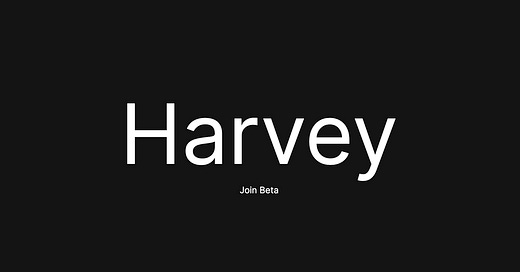Another AI Writer for Legal Documents Emerges with $5 Million Investment
OpenAI backs Harvey for contracts and legal research
Techcrunch reported last week that Harvey, an AI-based contract and legal research assistant, emerged from stealth and secured $5 million in funding from the OpenAI Startup Fund. Company co-founder Gabriel Pereyra told Techcrunch that Harvey is designed as a “co-pilot for lawyers.” He added in an email interview:
“Our product provides lawyers with a natural language interface for their existing legal workflows. Instead of manually editing legal documents or performing legal research, Harvey enables lawyers to describe the task they wish to accomplish in simple instructions and receive the generated result. To enable this, Harvey leverages large language models to both understand users’ intent and to generate the correct output.”
GPT-3 Lays Down the Law
The large language model (LLM) used by Harvey is none other than OpenAI’s GPT-3. This is the same LLM employed by Spellbook from legal firm SaaS provider Rally. Several software providers are experimenting with GPT-3. Notably, CaseText was one of the first examples way back in 2020. CaseText and many of Harvey’s suggested features are search-based solutions. Spellbook actually helps you draft contract language, and it looks like Harvey may as well. Granted, Harvey is in a strictly controlled beta period without much detail about the features in production.
Interestingly, the Harvey co-founder used the term “co-pilot” in his interview. Co-pilot is the name of GitHub’s GPT-3 product that writes code for software developers. Scott Stevenson, CEO and co-founder of Rally told Voicebot in an interview that GitHub Co-pilot was the company’s inspiration for Spellbook. GPT-3 has creative writing skills that range from short stories and poetry to persuasive essays and blog posts. It also can produce technical writing where precision matters. Software code and legal documents fall in the latter category.
Hyper-Automation = Productivity
While most of the early examples of GPT-3 and other LLMs have fallen into the category of creative writing, that was driven by the accessibility of the format as well as the prevailing wisdom that AI could not be “creative.” Those examples changed people’s perceptions about what AI text-to-text generators could do. However, the stakes are lower in creative writing than in technical writing involving legal contracts and software code. The rapid shift of LLM technology into these segments is driving a new round of eye-opening changes in perception.
Almost all of the use cases with market adoption momentum are driven by the goal of higher productivity. Synthedia has pegged this as the hyper-automation benefit of synthetic media. Lawyers and software developers are high-cost resources. Any productivity improvement can deliver a significant bottom-line impact.
Part of that productivity gain is related to filling the blank page with text or code, and part is filling it with appropriate text or code. The reduction in errors means less time required for quality assurance and revising first drafts. It also may mean a lower risk of missing important elements, which might be viewed as a quality benefit. That is certainly something that Rally is promoting as a Spellbook benefit.
However, the key trend driving synthetic media adoption right now is the quantity of output. Quality is important in some segments, notably entertainment and virtual humans. However, the race is on right now for AI-based productivity gains, and the speed is accelerating as everyone seeks to gain a large market share before their rivals.






